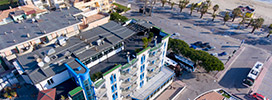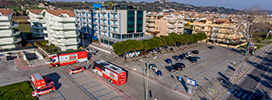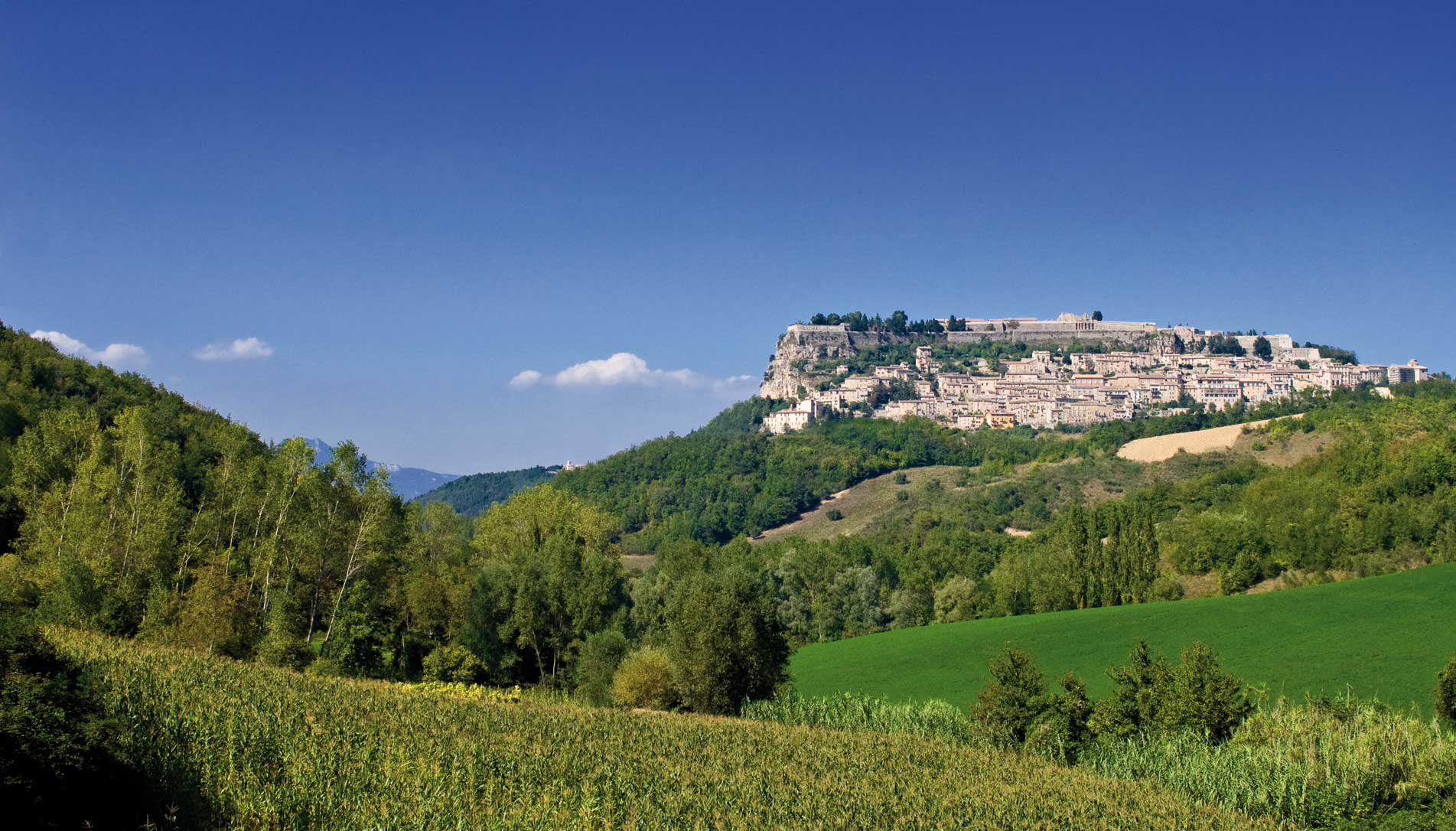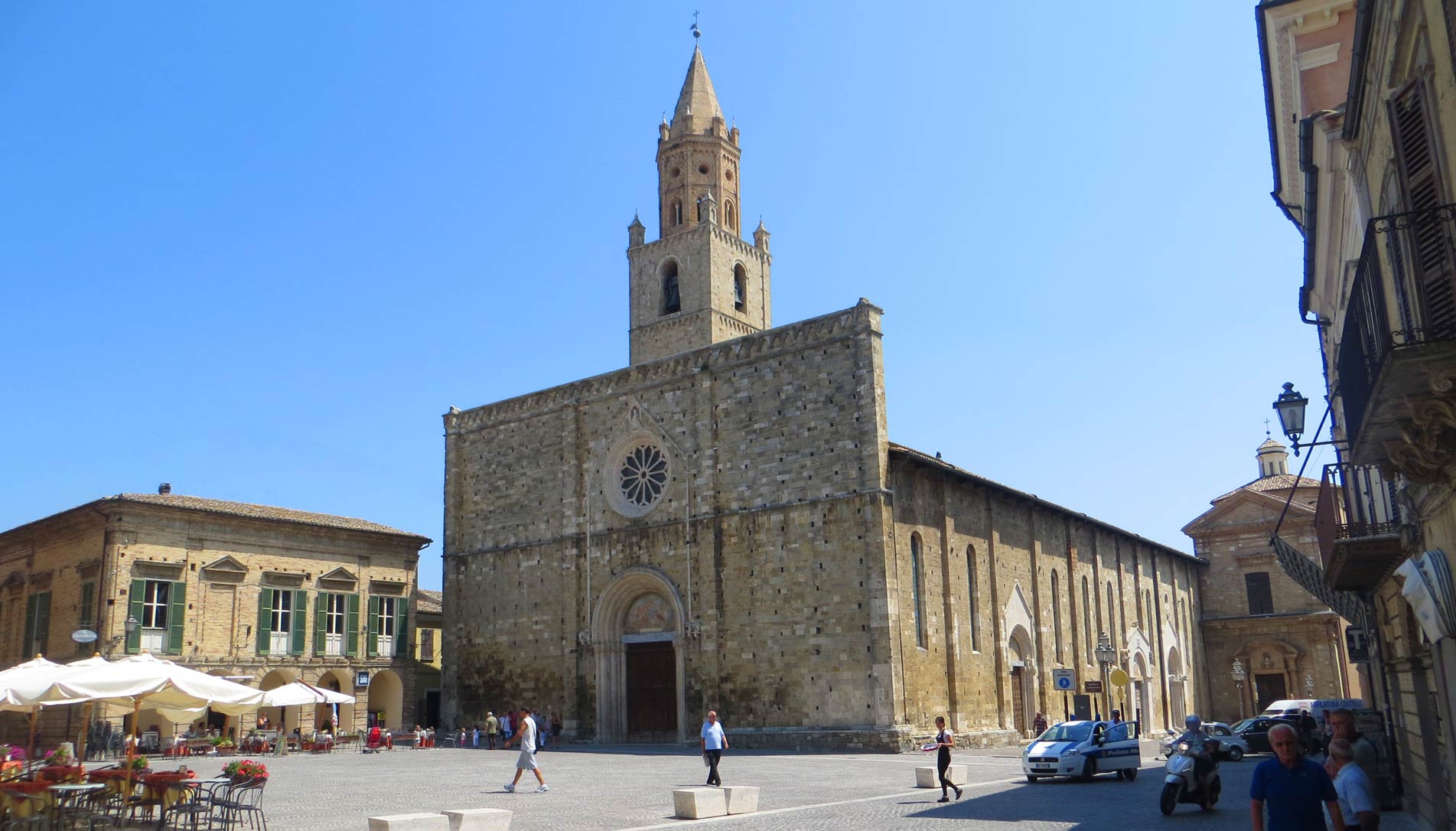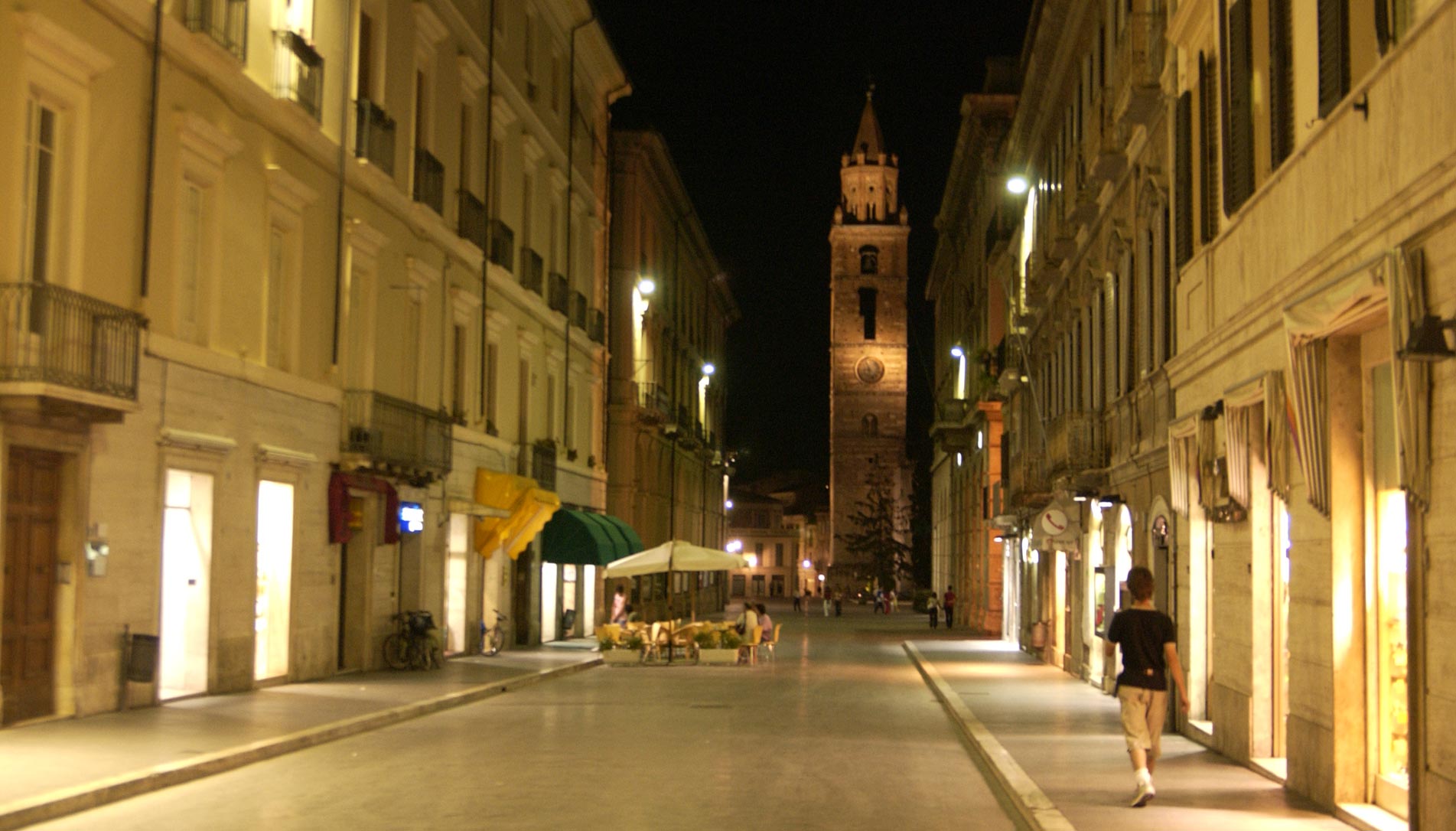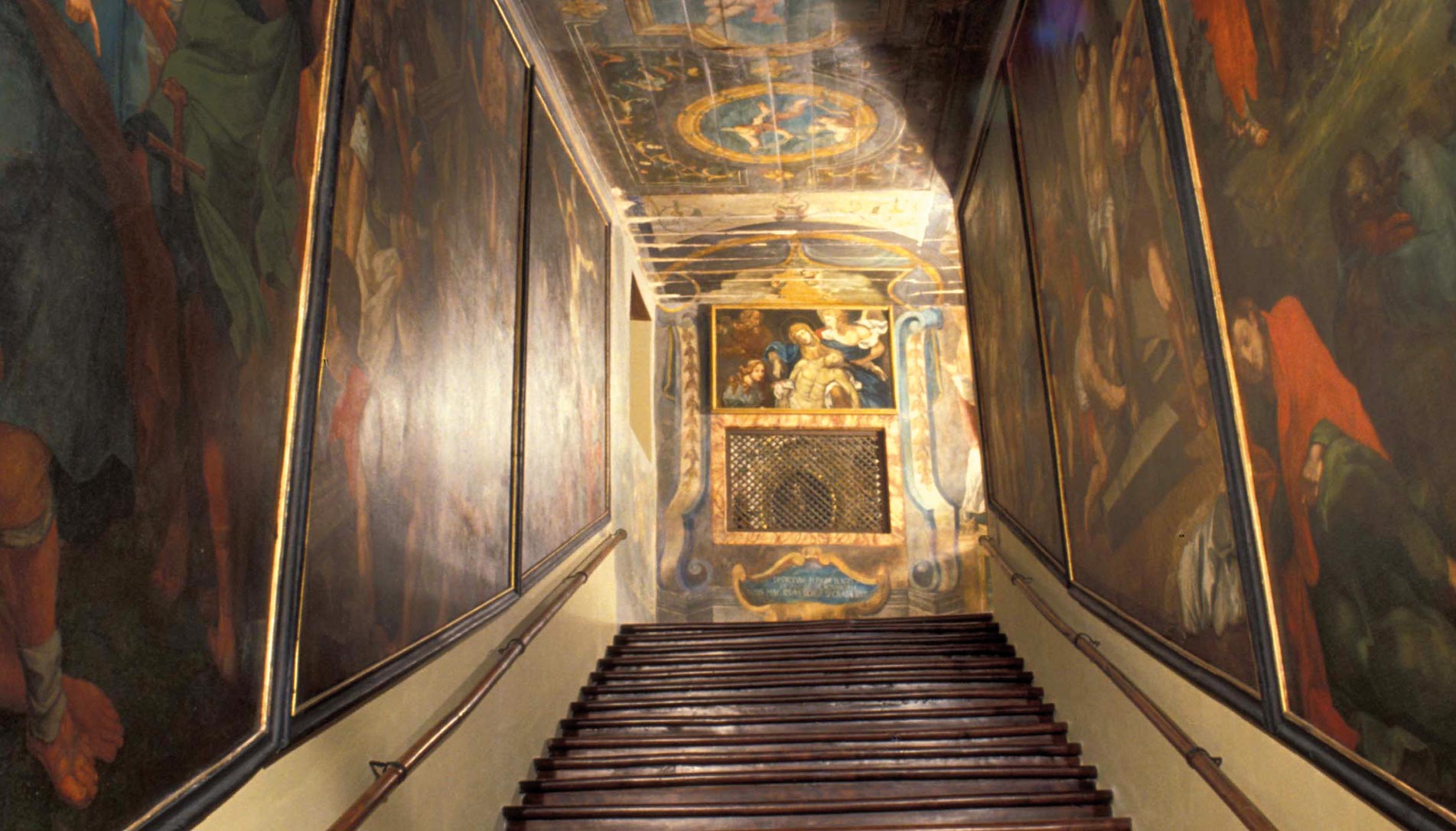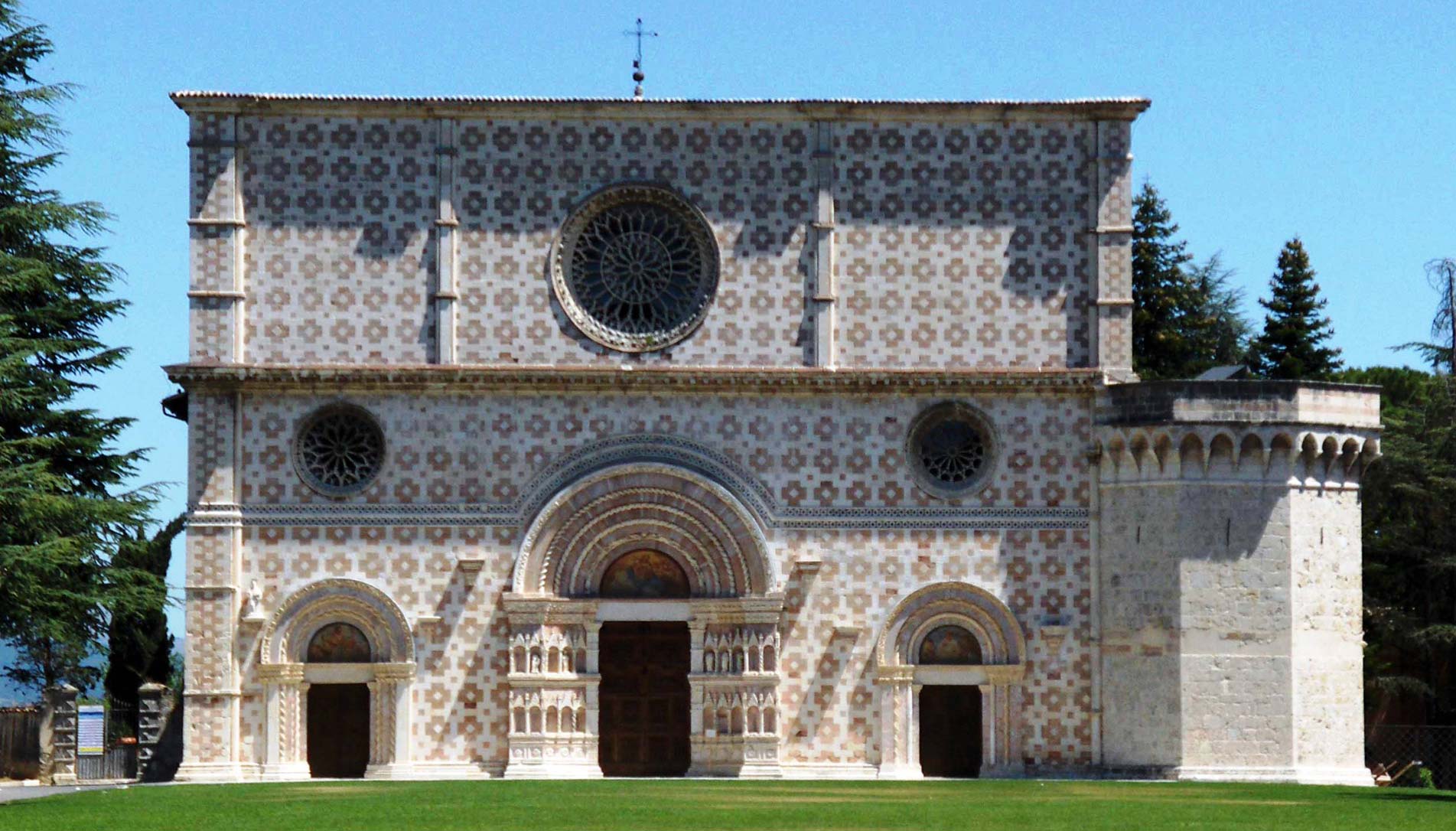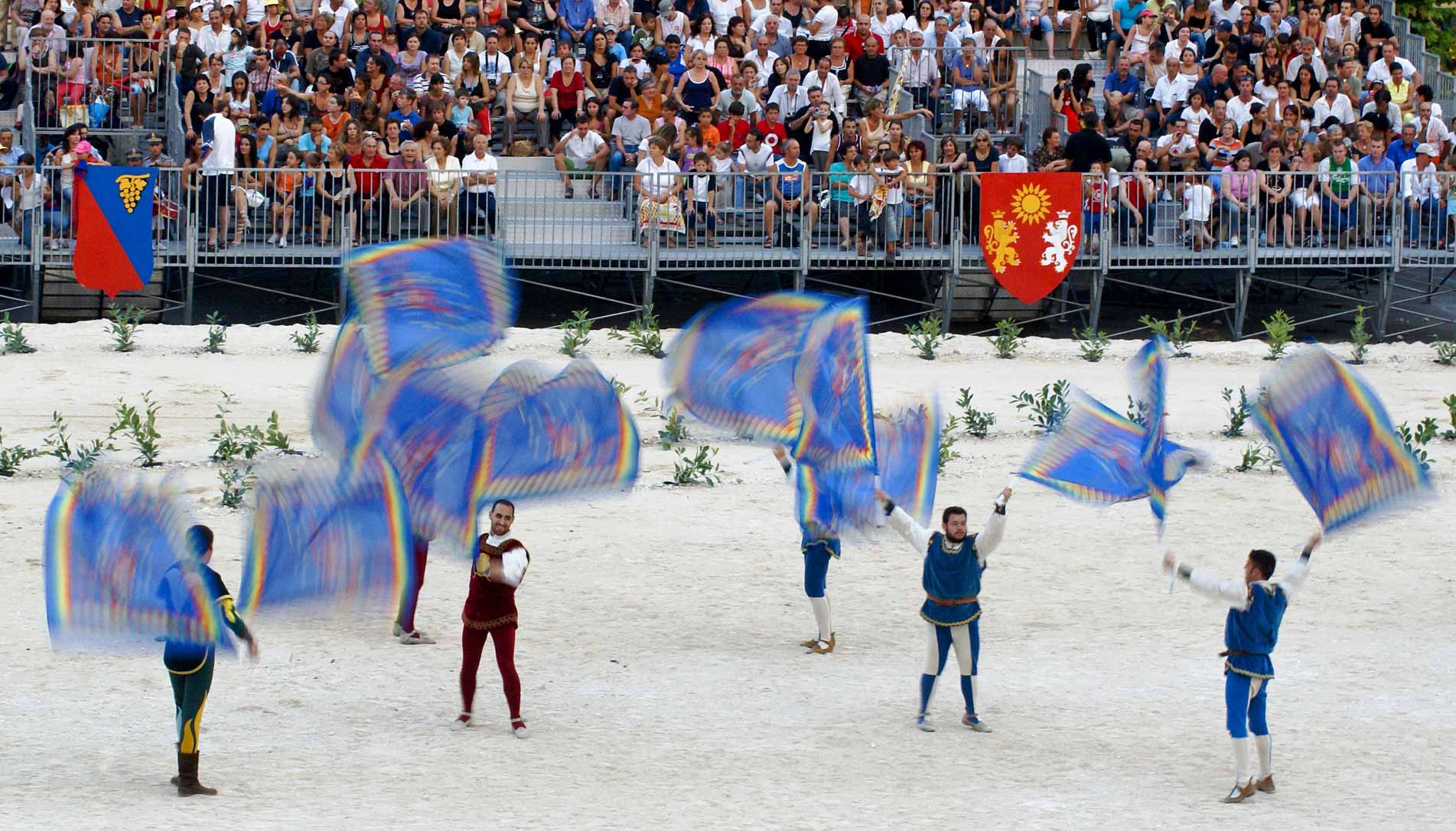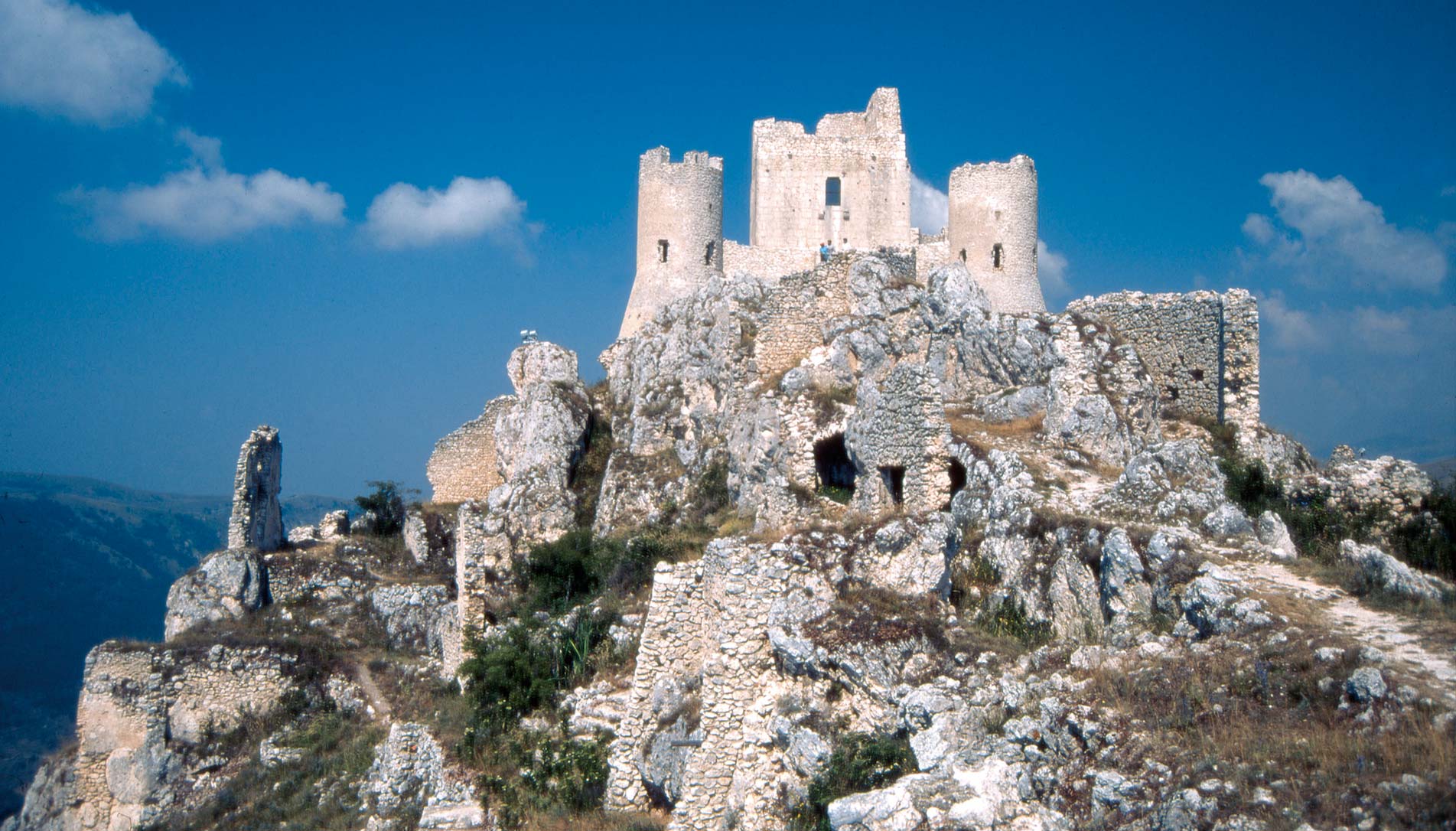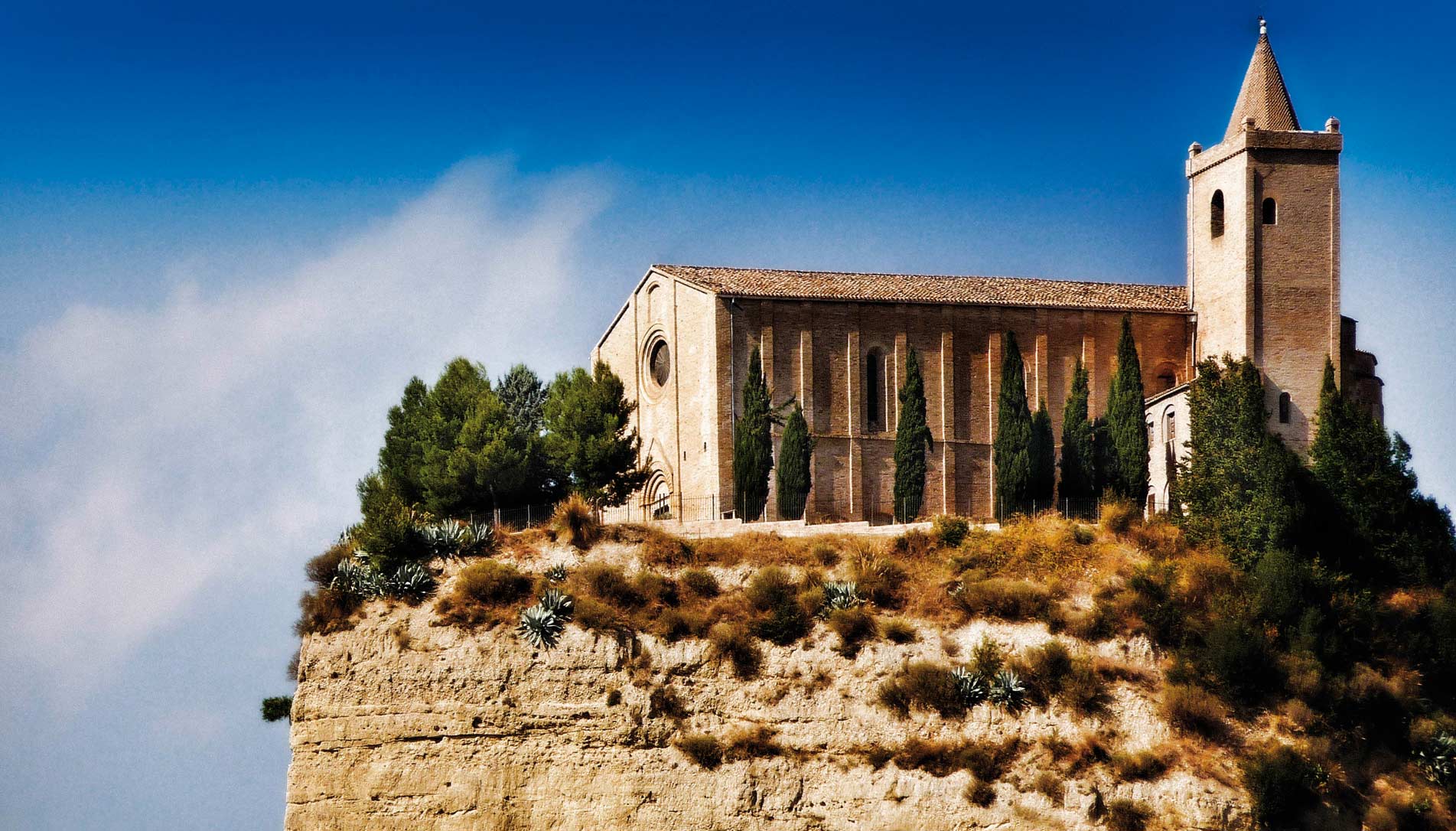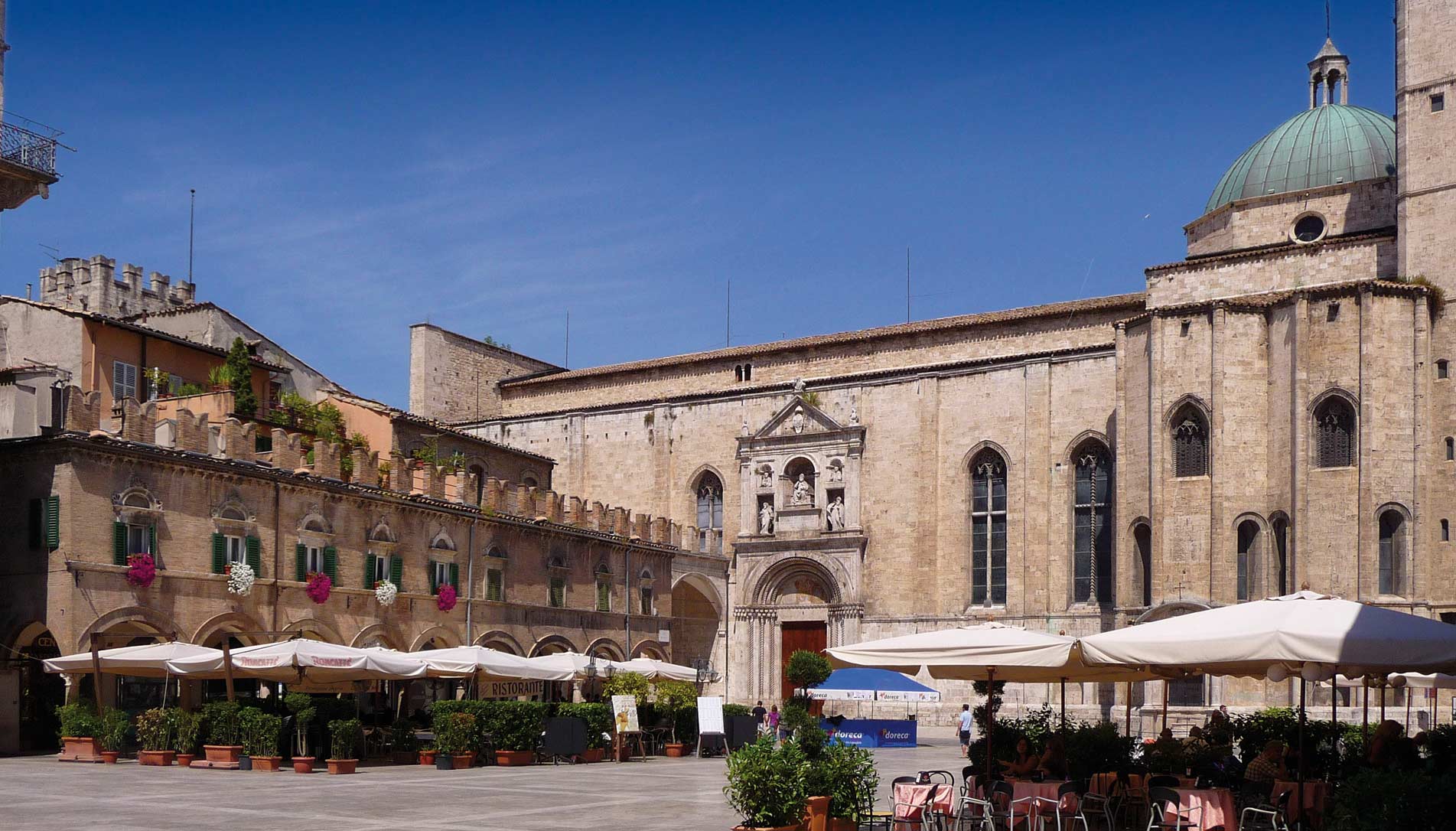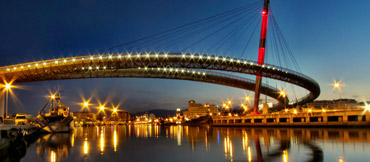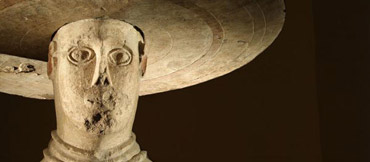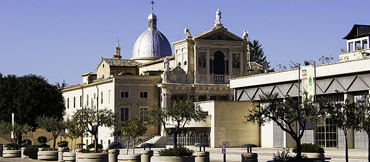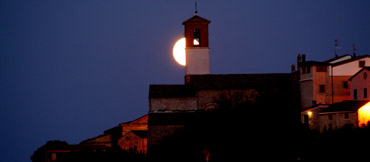Teramo
Teramo, a city between mountains and sea
The city of Teramo is situated near Gran Sasso Mountains, in a hill area that expands towards the sea, having a Mediterranean vegetation, mostly vineyard and olive trees. The name of "Teramo" is of Latin origins, as the Romans called it "Interamnia Urbs"(the city between two rivers). From Interamnia Urbs derived Interamne, Teramne, Teramnium, Teramum and afterwards the nowadays Teramo. A second theory, not confirmed though, suggests that the name of Teramo comes from "Thermae", referring to the presence of the thermal baths in different areas of the city.
Teramo from the origins to nowadays
The first theory of the name of Teramo is confirmed also by the Roman origins of the city. Vestiges of the ancient theatre, of baths and other buildings of Roman date, as well as statues, altars, and other ancient remains, have been discovered on the site: numerous inscriptions have been also found, in one of which the citizens are designated as Interamnites Praetutiani. The city rapidly declined after the fall of the Western Empire and, following Goth and Byzantine domination, became part of the territories of the Lombard Dutchy of Spoleto. In 1156 it was put on fire by Norman Count Robert of Loretello and then rebuilt thanks to Bishop Guido II. In the 14th and 15th centuries it was plagued by feuds between local families which finally ended under the Aragonese dominion. After that it shared the fortunes of the Kingdom Of Naples - under which it was the capital of the province of Abruzzo Ulteriore - until in 1860 when it was annexed to the Kingdom of Italy. During World War II the people of Teramo rebelled against the German occupation. This deed earned the province of Teramo the Gold Medal for Civil Valour, assigned by Carlo Azeglio Ciampi on September 15th, 2005.
Main sights
One of the most valuable monument of the city is the majestic Cathedral of San Berardo, built in 1158 by bishop Guido II, in Romanesque style. Noteworthy is the great portal in Gothic style, finished in 1332 by the Roman master Deodato di Cosma. It houses a precious silver paliotto by Nicola of Guardagriele (with 35 scenes of the life of Jesus) and a polyptych by the Venetian artist Jacobello del Fiore depicting the Incoronation of the Virgin. Annexed is a 50 m bell tower.
Near the Cathedral we'll find also the remains of the Roman Theatre (built 30 BCE) and of the amphitheatre (about 3rd , 4th century CE). The Roman Theatre with a diametre of about 78 metres was able to accommodate up to 3 thousand persons. Don't miss San Giovanni Convent, the Palazzo Vescovile ("Bishops Palace"), from the 14th century, The Provincial Library, The Civic Museum and the Art Gallery.
If you decide to go outside the town, you should also visit the sanctuary of the "Madonna delle Grazie" (also known as Chiesa di Santa Maria delle Grazie). It has a notable Romanesque cloister and a 15th century miraculous wooden statue of the Virgin, attributed to Silvestro dell'Aquila. Very interesting to see is also The Astronomical Observatory, where in 1910 the asteroid Interamnia was discovered, where it's still possible to admire the sky, booking in advance a guided visit.
Discover our rates
To know the prices of our structure, offers, packages or to receive a personalized estimate please contact us or visit the page of the list.
ASK FOR AVAILABILITY GO TO PRICELISTAREA VIDEO
SAY ABOUT US
"Great hotel, friendly staff, excellent food!"
Booked for 7 nights on basis of TripAdvisor reviews. Superior room on 3rd floor, full board which included 3 meals / day (from set menu), beach access (chairs & umbrella). Room was very spacious...
Marius R
"Dejan& Melita - Great Hotel"
Frist time in Italy for summer vacation and first time staying in Hotel Ambassador . This experience was something special for us !!!! . Hotel is great...
Dejan K
"Beautiful hotel in a lovely location"
We chose this hotel because we wanted a location near the beach, comfortable and modern. This hotel certainly delivered all our requests. It is just a few steps away from the beach...
Josef F
WELCOME
“At Ambassador Hotel our philosophy is "no expectation is too high, no detail is too insignificant". Our only objective is to offer to all our guests a warm and comfortable stay, as our passion is to meet your highest expectations. We are ready to make you feel like 4 star guests.”
Berardo Varani
General Manager Hotel Ambassador Tortoreto
